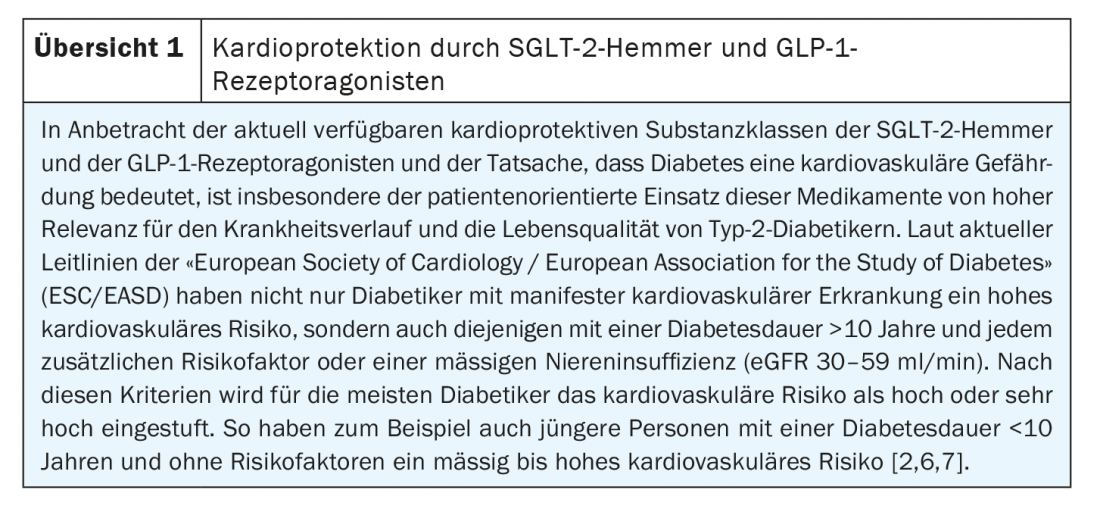The treatment options for type 2 diabetes mellitus are very complex. In addition to the large number of new active ingredients on the market, the scientific data base is constantly being expanded. “Swiss Diabetes Guide” is an app for healthcare professionals that offers practice-oriented recommendations on drug therapy for type 2 diabetes based on the recommendations of the Swiss Society of Endocrinology and Diabetology (SGED).
The scientific evidence base for optimal drug treatment of type 2 diabetes mellitus is immense, but implementation in the “real world” setting is proving to be extremely complex. In the past decade, numerous new antidiabetic drugs have entered the market, which have demonstrated an excellent benefit-risk profile in clinical trials. However, as shown by a large survey conducted in the USA (“National Health and Nutrition Examination Survey”), about half of type 2 diabetics do not reach the primary treatment goal (HbA1c <7.0%) despite antidiabetic medication [1].
Lack of adherence impairs therapeutic success
Lack of medication adherence has been cited as one of the reasons for missing treatment goals [1,2]. The German National Health Care Guideline for Type 2 Diabetes, which will be published in 2021, also refers to the non-adherence problem and the associated increased risk of secondary complications, which is well documented in the literature [3,4,9]. Patient-tailored therapy seems to be a relevant factor for drug adherence. According to the authors of the guideline, clinical experience shows that treatment goals are too rarely adapted to the individual patient’s situation [3]. Relevant aspects mentioned include the change in quality of life due to the type of therapy (e.g., injection therapy vs. oral medication), individual life situation, and resources [3]. Complex drug prescriptions and adverse drug reactions may have a negative impact on adherence, in addition to other factors such as poor patient education, lack of disease understanding, or insufficient patient-doctor trust [2]. But the factor of “clinical inertia” should not be underestimated either. A systematic review reported that the median time from identification of an above-target HbA1c level to intensification of therapy was over one year, and another data source reported that, on average, over seven years elapsed before ineffective oral antidiabetic therapies were supplemented with insulin [2,5,10].
Solution approach: digital tool for personalized diabetes management
In summary, the goal is to identify the therapy that is most optimally tailored to individual conditions from the plethora of available drug treatment options. Against this background, an app (“Swiss Diabetes Guide”) was developed to serve as a decision support tool for personalized antidiabetic therapy in daily clinical practice (box) [2]. For this purpose, various treatment-relevant parameters are recorded, including preferences of the patients and the treating physicians. From a medical perspective, consideration of existing insulin deficiency (e.g., polydipsia, polyuria, ketonuria, weight loss) and comorbidities such as renal function impairment, obesity, cardiovascular disease, and heart failure (review 1) is central. The treatment suggestions generated by the “Swiss Diabetes Guide” app are evidence-based and based on the recommendations of the SGED and the most important clinical characteristics of the patients [8]. The target group is medical professionals in Switzerland. Recommendations are generated directly on the user’s device, so no Internet connection is required and the application does not collect or store any personal data. For all information on the individual preparations approved in Switzerland, the “Arzneimittel-Informationspublikationssystem” (AIPS) of Swissmedic was accessed. Currently, this application does not have the official status of a medical product, accordingly, this application is not CE certified, but this is being sought.
Literature:
- Edelman SV, Polonsky WH: Type 2 Diabetes in the Real World: The Elusive Nature of Glycemic Control. Diabetes Care 2017; 40(11): 1425-1432.
- Schneider L, Lehmann R: Decision support for personalized therapy in type 2 diabetes mellitus. “Swiss Diabetes Guide. Swiss Med Forum 2021; 21(1516): 251-256.
- National guideline on care, type 2 diabetes, partial publication of the long version, 2nd edition, version 1 AWMF registry no. nvl-001, www.awmf.org/uploads/tx_szleitlinien/nvl-001l_S3_Typ_2_Diabetes_2021-03.pdf, (last accessed May 12, 2021).
- Petrak F, et al: Motivation and diabetes – time for a paradigm shift?: – A position paper – Diabetology and Metabolism 2019; 14(03): 193-203.
- Khunti K, et al: Clinical inertia in people with type 2 diabetes: a retrospective cohort study of more than 80,000 people. Diabetes Care 2013; 36(11): 3411-3417.
- Mach F, et al: 2019 ESC/EAS Guidelines for the management of dyslipidaemias: lipid modification to reduce cardiovascular risk. Eur Heart J 2020; 41(1): 111-188.
- Cosentino F, et al: 2019 ESC Guidelines on diabetes, pre-diabetes, and cardiovascular diseases developed in collaboration with the EASD. Eur Heart J 2020; 41(2): 255-323.
- Lehmann R, et al: Recommendations of the Swiss Society of Endocrinology and Diabetology (SGED/SSED) for the treatment of type 2 diabetes mellitus (2020). 2020; www.sgedssed.ch/diabetologie/sged-empfehlungen-diabetologie, (last accessed 12.05.2021).
- Cramer JA: A systematic review of adherence with medications for diabetes. Diabetes Care 2004; 27(5): 1218-1224.
HAUSARZT PRAXIS 2021; 16(7): 47














